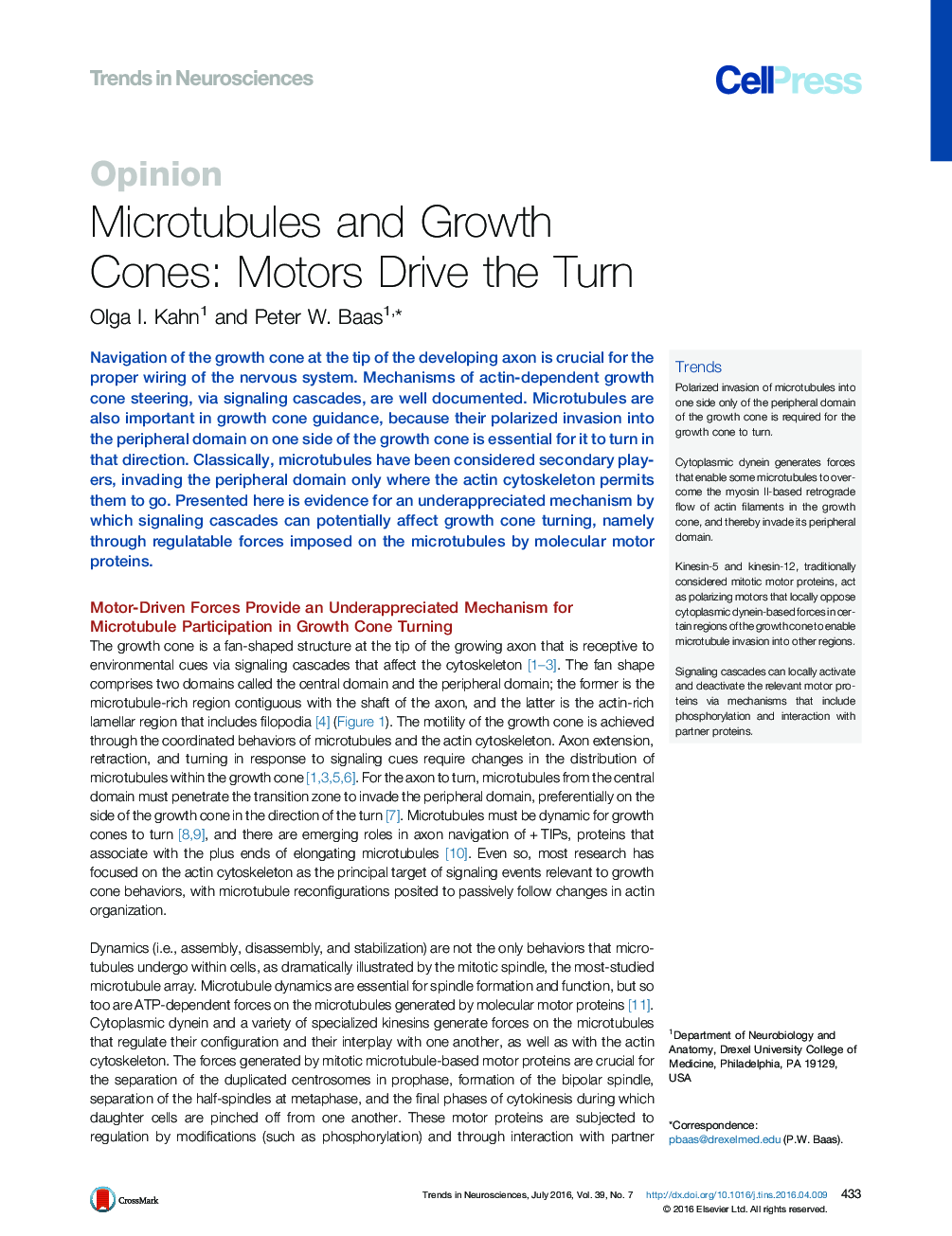| Article ID | Journal | Published Year | Pages | File Type |
|---|---|---|---|---|
| 4354094 | Trends in Neurosciences | 2016 | 8 Pages |
Navigation of the growth cone at the tip of the developing axon is crucial for the proper wiring of the nervous system. Mechanisms of actin-dependent growth cone steering, via signaling cascades, are well documented. Microtubules are also important in growth cone guidance, because their polarized invasion into the peripheral domain on one side of the growth cone is essential for it to turn in that direction. Classically, microtubules have been considered secondary players, invading the peripheral domain only where the actin cytoskeleton permits them to go. Presented here is evidence for an underappreciated mechanism by which signaling cascades can potentially affect growth cone turning, namely through regulatable forces imposed on the microtubules by molecular motor proteins.
TrendsPolarized invasion of microtubules into one side only of the peripheral domain of the growth cone is required for the growth cone to turn.Cytoplasmic dynein generates forces that enable some microtubules to overcome the myosin II-based retrograde flow of actin filaments in the growth cone, and thereby invade its peripheral domain.Kinesin-5 and kinesin-12, traditionally considered mitotic motor proteins, act as polarizing motors that locally oppose cytoplasmic dynein-based forces in certain regions of the growth cone to enable microtubule invasion into other regions.Signaling cascades can locally activate and deactivate the relevant motor proteins via mechanisms that include phosphorylation and interaction with partner proteins.
